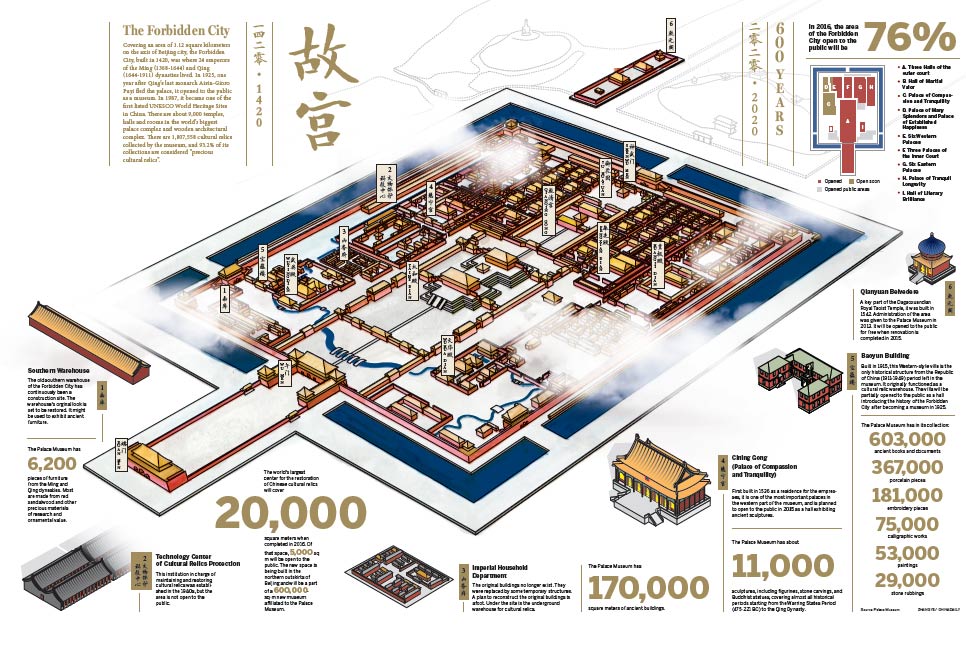 |
|
Click the image for a larger version of the Palace Museum graphic. Graphic by Zhang Ye / China Daily |
The director of the Palace Museum is working tirelessly to improve visitors' experiences at the World Heritage Site and
protect its ancient treasures. He talks to Wang Kaihao about his passion for this unique symbol of China.
Shan Jixiang, 60, may have done something never achieved by any of the Forbidden City's former royal residents. After taking the position of director of the Palace Museum in 2012, he has been to all 9,000 temples, halls and rooms in the world's biggest palace complex and wooden architectural complex.
"I can barely take a single day off all year. I have to constantly walk around the palace to scrutinize every corner," a smiling Shan says. "Being the person in charge of such a museum with such complex needs, rich history and intense attention from around the world, you cannot expect to sleep well."
Covering an area of 1.12 square kilometers, the Forbidden City, built in 1420, was home to 24 emperors of the Ming (1368-1644) and Qing (1644-1911) dynasties. In 1925, one year after the last Qing monarch Aisin-Gioro Puyi was forced to leave the palace, it opened to the public as a museum. In 1987, it became one of China's first UNESCO World Heritage Sites.
"No other major museum in the world has equal significance to the layout of a city," Shan says. "I can declare to the world without any exaggeration: This is among the world's top five museums, together with the Louvre, the Metropolitan Museum of Art, the British Museum and the State Hermitage Museum."
He does not hesitate when asked how many cultural relics are kept by the museum - "1,807,558", he says with confidence. He also has accurate statistics on each of the 25 categories of relics, including 53,482 paintings, 75,031 pieces of calligraphy and 159,734 pieces of copper ware. "After a painstaking seven-year detailed survey winding up in 2011, we can finally stop estimating that we own about 1 million pieces," he says.
Shan says about 28,000 manuscripts of poems written by Emperor Qianlong (1711-1799) were recently found in the palace. They were discovered in an unmarked box.
"If someone found even one manuscript of Napoleon Bonaparte, it would probably stir up the whole of the Western world," he says. "So, who knows how many more astonishing secrets are hidden here?"
|
|
|
|
|
|